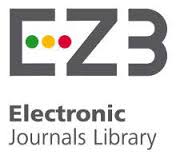CAN GROUP RIGHTS JUSTIFY THE DENIAL OF EDUCATION TO ADOLESCENTS? THE AMISH IN THE UNITED STATES AS A CASE STUDY
DOI :
https://doi.org/10.25245/rdspp.v9i2.1104Mots-clés :
Amish, education, open future, state interference, Wisconsin v. YoderRésumé
Multiculturalism gives preference to group rights over individual rights. This may challenge democratic values. This paper focuses on the Amish denial of education from their adolescents. Criticizing Wisconsin v. Yoder (1972), the paper analyses the power of the Amish community over its members. The main questions are: Is it reasonable to deny the Amish adolescents’ standard American education? What are the limits of state interference in norms of illiberal communities who invoke separatism as a mechanism of cultural and religious preservation?
Références
Olivia B. Waxman, “Breaking Amish: One Ex-Follower’s True Story of Moving to the Big Apple,” Time (September 9, 2012), http://entertainment.time.com/2012/09/09/breaking-amish-one-ex-followers-true-story-of-moving-to-the-big-apple/
Donald B. Kraybill, Karen M. Johnson-Weiner, and Steven M. Nolt, The Amish (Baltimore: Johns Hopkins University Press, 2013); Steven M. Nolt, The Amish (Baltimore, MD: Johns Hopkins University Press, 2016).
Ibid.
“Amish State Guide,” Amish America, http://amishamerica.com/amish-state-guide/
“What’s the difference between Amish and Mennonites?,” Amish America, http://amishamerica.com/whats-the-difference-between-amish-and-mennonites/
Steven M. Nolt, The Amish; James P. Choy, “Religion and the Family: The Case of the Amish,” The Warwick Economics Research Paper Series (TWERPS) (2016); Mindy Starns Clark, Plain Answers about the Amish Life (Eugene, OR: Harvest House publishers, 2011).
“Education,” Amish Studies, https://groups.etown.edu/amishstudies/social-organization/education/
Thomas J. Meyers, “The Old Order Amish: To Remain in the Faith or to Leave,” The Mennonite Quarterly Review, 68 (1994): 378-395; Karen Johnson-Weiner, Train Up a Child: Old Order Amish and Mennonite Schools (Baltimore: Johns Hopkins University Press, 2007).
A Look At Amish Education, http://www.exploring-amish-country.com/amish-education.html
Mark W. Dewalt, Amish Education in the United States and Canada (Lanham, MD: Rowman and Littlefield Education, 2006): 7, 188; Donald B. Kraybill, Karen M. Johnson-Weiner, and Steven M. Nolt, The Amish (Baltimore: Johns Hopkins University Press, 2013), chapter 14.
David L. McConnell and Charles E. Hurst, “No ‘Rip van Winkles’ Here: Amish Education since Wisconsin v. Yoder,” Anthropology & Education Quarterly, 37, No. 3 (Sep., 2006): 248. See also Devil’s Background, A Documentary About Amish Teenage Culture (2002).
Wisconsin v. Yoder 406 US 205, 92 S.Ct 1526 (1972): 211.
Mark W. Dewalt, Amish Education in the United States and Canada: 7-8, 113, 190, 194.
A Look At Amish Education, http://www.exploring-amish-country.com/amish-education.html
Brian Barry, Culture and Equality (Cambridge, Mass.: Harvard University Press, 2001): 207.
Mark W. Dewalt, Amish Education in the United States and Canada: 7, 115, 190.
For discussion on a typical teacher day in the Amish community, see Mark W. Dewalt, Ibid.: 130-134.
James P. Choy, “Religion and the Family: The Case of the Amish.”
Wisconsin v. Yoder 406 US 205, 92 S.Ct 1526 (1972).
John A. Hostetler, Amish Society (Baltimore: Johns Hopkins University Press, 1993): 16.
Wis 2d 430, 182 NW2d 539.
Powell and Rehnquist, JJ., did not participate.
Wisconsin v. Yoder 406 US 205, 92 S.Ct 1526 (1972), at 221.
Ibid. See also Ian Shapiro, “Democratic Justice and Multicultural Recognition,” in Paul Kelly (ed.), Multiculturalism Reconsidered (Cambridge: Polity, 2002): 174-183.
Wisconsin v. Yoder 406 US 205, 92 S.Ct 1526 (1972), at 218.
Mark Dewalt, Amish Education in the United States and Canada.
United Nations Human Rights, Convention on the Rights of the Child, Adopted and opened for signature, ratification and accession by General Assembly resolution 44/25 of 20 November 1989 entry into force 2 September 1990, in accordance with article 49. Preamble. https://www.ohchr.org/en/professionalinterest/pages/crc.aspx
Ibid.
Ibid.
B. Shaw Drake and Megan Corrarino, “U.S. Stands Alone: Not Signing U.N. Child Rights Treaty Leaves Migrant Children Vulnerable,” Huffington Post (October 13, 2015), https://www.huffpost.com/entry/children-migrants-rights_b_8271874
S.Res.99 - A resolution expressing the sense of the Senate that the primary safeguard for the well-being and protection of children is the family, and that the primary safeguards for the legal rights of children in the United States are the Constitutions of the United States and the several States, and that, because the use of international treaties to govern policy in the United States on families and children is contrary to principles of self-government and federalism, and that, because the United Nations Convention on the Rights of the Child undermines traditional principles of law in the United States regarding parents and children, the President should not transmit the Convention to the Senate for its advice and consent. 112th Congress (2011-2012), Congress.gov, https://www.congress.gov/bill/112th-congress/senate-resolution/99 . See also Joe Lauria, “Why Won’t the US Ratify the UN’s Children’s Rights Convention?”, Huffpost (January 25, 2015), https://www.huffpost.com/entry/why-wont-the-us-ratify-th_b_6195594?guccounter=1&guce_referrer=aHR0cHM6Ly93d3cucmVzZWFyY2hnYXRlLm5ldC8&guce_referrer_sig=AQAAAAnj5rkIPVaGKJFZUEYjcWttylVzeIqsiODSudVMd6-UNq45eo5VB2_YJXtGlFY9-EJ_LFDA7gRH6ufpePqvz1RnP7yhkzw-h4qqFvOTxN2aQmQHsYuYN9zmFvld1ac7FshRhqwf-xIDriuQMhAd22SyFW5DKFrLCaAX_bNa05p6
S.C., “Why won't America ratify the UN convention on children's rights?”, The Economist (October 7, 2013), https://www.economist.com/the-economist-explains/2013/10/06/why-wont-america-ratify-the-un-convention-on-childrens-rights
J.S. Mill, Utilitarianism, Liberty, and Representative Government (London: J. M. Dent, 1948): 160; Mill, Principles of Political Economy (New York: D. Appleton, 1885): 201.
Ibid.
J.S. Mill, Principles of Political Economy (London: Longmans, Green, Reader and Dyer, 1869), Bk. V, 575. For different interpretations of Mill, see Richard S. Ruderman and R. Kenneth Godwin, “Liberalism and Parental Control of Education,” The Review of Politics, 62, No. 3 (Summer 2000): 503-529; R. Cohen-Almagor, “Between Autonomy and State Regulation: J.S. Mill’s Elastic Paternalism,” Philosophy, 87 / Issue 04 (October 2012): 557-582.
J.S. Mill, Utilitarianism, Liberty, and Representative Government: 202-208. Mill wrote: “The very corner-stone of an education intended to form great minds, must be the recognition of the principle, that the object is to call forth the greatest possible quantity of intellectual power, and to inspire the intensest love of truth.” See Mill, “Civilization, [1836],” (London: Longmans, Green, Reader & Dyer, 1859), available at http://ringmar.net/politicaltheoryfornomads/index.php/john-stuart-mill-civilization-1836-in-dissertations-and-discussions-political-philosophical-and-historical-london-j-w-parker-1859-160-205/
Eamonn Callan, Creating Citizens. Political Education and Liberal Democracy (Oxford: Oxford University Press, 1997): 139; Allan J. Jacobs and Kavita Shah Arora, “When May Government Interfere with Religious Practices to Protect the Health and Safety of Children?,” Ethics, Medicine and Public Health, 5 (April–June 2018): 86-93. See also Charles Fried, Right and Wrong (Cambridge, Mass.: Harvard University Press, 1979).
Pierce v. Society of Sisters, 268 U.S. 510 (1925), at 534. http://cdn.loc.gov/service/ll/usrep/usrep268/usrep268510/usrep268510.pdf
Pierce v. Society of Sisters, 268 U.S. 510 (1925).
John Rawls, A Theory of Justice (Oxford: Oxford University Press, 1971): 516.
Ibid., 302.
Harry Brighouse, School Choice and Social Justice (Oxford: Oxford University Press, 2003): 111.
Amy Gutmann, Democratic Education (Princeton, New Jersey: Princeton University Press, 1987): 46.
Rob Reich, Bridging Liberalism and Multiculturalism in American Education (Chicago: University of Chicago Press, 2002).
Rawls, Political Liberalism: 199.
Amy Gutmann, Democratic Education: 51.
Ibid.: 76. See also Stephen Macedo, Diversity and Distrust: Civic Education in a Multicultural Democracy (Cambridge, MA: Harvard University Press, 2000).
G. Almond & S. Verba, The Civic Culture (NY: Little, Brown & Company, 1965): 105, 317 318, 502.
Wisconsin v. Yoder, at 222.
Ibid.
Ibid. For further discussion, see John A. Hostetler, “The Amish and the Law: A religious minority and its legal encounters,” Washington and Lee L. Rev., 41(1) (Winter 1984): 40-44.
Wisconsin v. Yoder, at 224.
Ibid, at 224.
Wisconsin v. Yoder, at 231.
Ibid., at 238.
Ibid., at 235.
Prince v. Massachusetts, 321 U.S. 158 (1944); Ginsberg v. New York, 390 U.S. 629 (1968); Parham v. J.R., 442 U.S. 584 (1979). For further discussion, Carmen Green, “Educational Empowerment: A child’s right to attend public school,” Georgetown Law J., 103 (2015): 1129-1130.
W. Kymlicka and R. Cohen-Almagor, “Ethnocultural Minorities in Liberal Democracies,” in Maria Baghramian and Attracta Ingram (eds.), Pluralism: the philosophy and politics of diversity (London: Routledge, 2000): 228-250. For further discussion, see Tariq Modood, Multiculturalism (Cambridge: Polity, 2013). For a contrasting view, see C. Kukathas, The Liberal Archipelago: A Theory of Diversity and Freedom (Oxford: Oxford University Press, 2003).
For further discussion of the Court's (divided) reasoning on this case, see S.F. Peters, The Yoder Case: Religious Freedom, Education, and Parental Rights (Lawrence, KS: University of Kansas Press, 2003); Dena Davis, “The Child's Right to an Open Future: Yoder and Beyond”, Capital University Law Review, 26 (1997): 93-105; Richard Arneson and Ian Shapiro, "Democratic Autonomy and Religious Freedom: A Critique of Wisconsin v. Yoder,” in Ian Shapiro and Russell Hardin (eds.), Political Order: Nomos 38 (New York: New York University Press, 1996): 365-411, and Shelley Burtt’s reply, "In Defense of Yoder: Parental Authority and the Public Schools,” in I. Shapiro and R. Hardin (eds.), Political Order: 412-437.
Wisconsin v. Yoder, at 224.
Wisconsin v. Yoder, at 226, note 13.
William A. Fischel, “Do Amish One-Room Schools Make the Grade? The Dubious Data of ‘Wisconsin v Yoder’,” University of Chicago Law Review, 79(1) (2012): 107-129.
“Woman Who Left The Amish Community Opens Up To Megyn Kelly,” Megyn Kelly TODAY (July 18, 2018), https://www.youtube.com/watch?v=WvFaEM2uX80
Saloma Miller Furlong, Bonnet Strings (Harrisonburg, VA.: Herald Press, 2014): 197.
“Woman Who Left The Amish Community Opens Up To Megyn Kelly,” Megyn Kelly TODAY (July 18, 2018), https://www.youtube.com/watch?v=WvFaEM2uX80; Candace Sutton, “‘I thought the earth was flat’: Teenage girl’s escape from the Amish,” News.com (August 3, 2018), https://www.news.com.au/lifestyle/relationships/family-friends/i-thought-the-earth-was-flat-teenage-girls-escape-from-the-amish/news-story/0fccfec5ea82e975f00202a4f47b76c3
James A. Cates, Serving the Amish (Baltimore, MD: Johns Hopkins University Press, 2014): 63.
Mark W. Dewalt, Amish Education in the United States and Canada: 117, 195.
Wisconsin v. Yoder, 210-211.
Lisa Aronson Fontes and Jeanette Harder, “Working with Amish Families on Child Abuse and Neglect,” Psychology Today (May 18, 2019).
James A. Cates, Serving the Amish: 92.
Saloma Miller Furlong, Bonnet Strings: 22, 51; Shelly Bradbury and Peter Smith, “Forced forgiveness: Plain community sexual abuse victims sometimes pressured to take offenders back,” Post-Gazette (May 28, 2019), https://newsinteractive.post-gazette.com/coverings/mennonites-forgiveness-sexual-abuse-coverings-plain-amish-lancaster-county/
Naimah Jabali-Nash, “Amish Man Arrested in Two-State Child Sex Crimes Case,” CBS News (June 10, 2010), https://www.cbsnews.com/news/amish-man-arrested-in-two-state-child-sex-crimes-case/; Mike Devlin, “10 Weird Facts About The Amish,” Listverse (August 29, 2014), https://listverse.com/2014/08/29/10-weird-facts-about-the-amish/
Cole Waterman, “Amish man faces 18 counts of sexual assault involving 3 girls,” Bay City News (August 16, 2018), https://www.mlive.com/news/bay-city/index.ssf/2018/08/amish_man_faces_18_counts_of_s.html; “Michigan Amishman Gets 15-25 Years For Sexual Assault,” Amish America (October 18, 2018), http://amishamerica.com/michigan-amishman-gets-15-25-years-for-sexual-assault/
Nick Sadowski, “Amish brothers accused of years-long sexual abuse of minors in Daviess County,” KMZU (January 24, 2019) http://www.kmzu.com/amish-brothers-accused-of-years-long-sexual-abuse-of-minors-in-daviess-county/
Misty Griffin, Tears of the Silenced: A True Crime and an American Tragedy; Severe Child Abuse and Leaving the Amish (La Vergne: Mango, 2018).
Saloma Miller Furlong, Why I Left the Amish: A Memoir (East Lansing, MI: Michigan State University Press, 2011); Saloma Miller Furlong, Bonnet Strings.
Torah Bontrager, An Amish Girl in Manhattan: A Memoir (Know-T Publishing, 2018).
Jennifer Lavoie, “Under Grace: Legal Isolation and the Children of the Old Order Amish.” The Modern American (Spring 2006): 32-34.
“Sexual Abuse in the Amish Community,” ABC News (December 10, 2004), https://abcnews.go.com/2020/story?id=316371&page=1
Ibid.
Wesley Robinson, “Amish bishop admits to covering up sex abuse, sentenced to probation,” Penn Live (September 11, 2017), https://www.pennlive.com/news/2017/09/amish_bishop_admits_to_coverin.html . See also “Fighting sexual abuse in the Amish community,” Fox43 (May 8, 2013); David Wright, “Abuse case dismissed against Highland County Amish family,” The Times-Gazette (November 24, 2017), https://www.timesgazette.com/news/21744/abuse-case-dismissed-against-highland-county-amish-family
James A. Cates, Serving the Amish: 91.
Lisa Aronson Fontes and Jeanette Harder, “Working with Amish Families on Child Abuse and Neglect.”
Peter Smith and Shelly Bradbury, “Mennonites, Amish face growing recognition of widespread sexual abuse in their communities,” Post-Gazette (May 20, 2019), https://newsinteractive.post-gazette.com/coverings/mennonite-amish-sexual-abuse-forgiveness-in-their-communities/; Shelly Bradbury and Peter Smith, “After years of abuse, a Mennonite couple reconnects with each other and their family,” Post-Gazette (May 22, 2019), https://newsinteractive.post-gazette.com/coverings/mennonites-burkholders-sexual-abuse-amish-coverings/ ; Stephanie Strasburg and Peter Smith, “Joanna's Journey,” Post-Gazette (June 3, 2019), https://newsinteractive.post-gazette.com/coverings/joanna-yoder-mennonite-child-sexual-abuse/ ; Peter Smith and Shelly Bradbury, “Never alone: Mennonite and Amish sexual abuse victims find each other and find their voices,” Post-Gazette (June 5, 2019), https://newsinteractive.post-gazette.com/coverings/amish-mennonite-sexual-abuse-support-podcasts-advocacy-victims/. Peter Smith published dozens of similar articles. See https://muckrack.com/peter-smith-25/articles
“Michigan Amishman Gets 15-25 Years For Sexual Assault,” Amish America (October 18, 2018), http://amishamerica.com/michigan-amishman-gets-15-25-years-for-sexual-assault/
Sarah McClure, “The Amish Keep to Themselves. And They’re Hiding a Horrifying Secret,” Cosmopolitan (January 14, 2020), https://www.cosmopolitan.com/lifestyle/amp30284631/amish-sexual-abuse-incest-me-too/?__twitter_impression=true&utm_campaign=todays_worldview&utm_medium=Email&utm_source=Newsletter&wpisrc=nl_todayworld&wpmm=1
Ibid.
Ibid.
Ibid.
Mark W. Dewalt, Amish Education in the United States and Canada: 20.
Not all Amish communities allow Rumspringa. See Emma Gingerich, Runaway Amish Girl: The Great Escape (Progressive Rising Phoenix Press, 2014).
Tom Shachtman, Rumspringa: To Be or Not To Be Amish (NY: North Point Press, 2007); William A. Fischel, “Do Amish One-Room Schools Make the Grade? The Dubious Data of ‘Wisconsin v Yoder’”: 113.
Tom Shachtman, Rumspringa: To Be or Not to Be Amish (NY: North Point Press, 2007); Devil’s Background, A Documentary About Amish Teenage Culture (2002).
Steven V. Mazie, “Consenting Adults?: Amish rumspringa and the quandary of exit in liberalism,” Perspectives on Politics, 3(4) (2005): 752.
Misty Griffin, Tears of the Silenced (La Vergne: Mango, 2018); Olivia B. Waxman, “Breaking Amish: One Ex-Follower’s True Story of Moving to the Big Apple,” Time (September 9, 2012), http://entertainment.time.com/2012/09/09/breaking-amish-one-ex-followers-true-story-of-moving-to-the-big-apple/; Laura DePinho, “Confessions of a Shunned Amish Girl,” The Odyssey (December 14, 2016), https://www.theodysseyonline.com/confessions-of-shunned-amish-girl; “10 Amazing Stories Of People Who Left The Amish Community,” https://www.youtube.com/watch?v=t11ix1B3DtI; Ruth Irene Garrett, Crossing Over: One Woman's Escape from Amish Life (San Francisco: HarperOne, 2013); Mary Simms, “Survivor Speaks Out Against Amish Rape Culture Ahead Of Sentencing,” Huffpost (October 4, 2017), https://www.huffingtonpost.com/entry/survivor-speaks-out-against-amish-rape-culture-ahead_us_581e7b02e4b0334571e09cfd
Wisconsin v. Yoder, at 243.
Ibid, at 244-245. For further discussion, see Stephen T. Knudsen, “The Education of the Amish Child,” California Law Rev., 62, Issue 5 (1974): 1506-1531.
Wisconsin v. Yoder, at 224.
Ibid, at 240.
Ibid, at 245.
Wisconsin v. Yoder, at 240.
Ibid, at 240.
Ibid, at 240.
Ibid, at 241.
Wisconsin v. Yoder, at 245-246.
Thomas J. Meyers, “The Old Order Amish: To Remain in the Faith or to Leave,” The Mennonite Quarterly Review, 68 (1994): 378-395.
Ibid.
James P. Choy, “Religion and the Family: The Case of the Amish.”
William A. Fischel, “Do Amish One-Room Schools Make the Grade? The Dubious Data of ‘Wisconsin v Yoder’”.
Wisconsin v. Yoder, at 221.
Ibid., 232.
In Re G [2012] EWCA Civ 1233, Lord Justice Munby wrote: (para. 43): “Although a parent's views and wishes as to the child's religious upbringing are of great importance, and will always be seriously regarded by the court, just as the court will always pay great attention to the wishes of a child old enough to be able to express sensible views on the subject of religion, even if not old enough to take a mature decision, they will be given effect to by the court only if and so far as and in such manner as is in accordance with the child's best interests. In matters of religion, as in all other aspects of a child's upbringing, the interests of the child are the paramount consideration.”
Re G [2012] EWCA (England and Wales Court of Appeal) Civ 1233, para. 27, https://www.familylawweek.co.uk/site.aspx?i=ed101479
Ibid., para. 33.
Wisconsin v. Yoder, 239.
Bhikhu Parekh, Rethinking Multiculturalism (Houndmills: Palgrave, 2000): 229-230.
John Rawls, The Law of Peoples (Cambridge, Mass.: Harvard University Press, 2002): 59-62. For further discussion, see Richard Rorty, “Justice as a Larger Loyalty,” Ethical Perspectives, 4 (1997): 139-151.
Rawls, The Law of Peoples, 25.
David Yoder, Amish Deception (Lulu, 2007).
Jeff Spinner-Halev, Surviving Diversity: Religion and Democratic Citizenship (Baltimore, MD: Johns Hopkins University Press, 2000): 113.
UK Department for Education, Elective Home Education - Departmental guidance for parents (April 2019): 11-12.
Saloma Miller Furlong, Bonnet Strings: 11.
Linda Byler, “Growing up Amish,” Penn State Shenango (n/d), https://shenango.psu.edu/feature/growing-amish
“Why do Amish only go to school until 8th grade?,” Amish America, http://amishamerica.com/why-do-amish-only-go-to-school-until-8th-grade/; David L. McConnell and Charles E. Hurst, “No ‘Rip van Winkles’ Here: Amish Education since Wisconsin v. Yoder,” Anthropology & Education Quarterly, 37, No. 3 (Sep., 2006): 244.
David L. McConnell and Charles E. Hurst, Ibid.: 246.
Charter schools are semiautonomous schools of choice. They receive government funding, use certified teachers but operate independently of the established state school system in which they are located. Many Amish people sit on such school committees. Charter schools operate with more freedom over their budgets, staffing and curricula compared to regular schools, and with less strict regulations imposed upon district schools. For information on Ohio charter schools, see https://www.ohioschoolboards.org/sites/default/files/OSBAGuidetoCharterSchools.pdf
GED is an alternative to the US High school diploma. This is a group of four subject tests which, when passed, provide certification that the student has US high school-level academic skills.
David L. McConnell and Charles E. Hurst, “No ‘Rip van Winkles’ Here: Amish Education since Wisconsin v. Yoder,” Anthropology & Education Quarterly, 37(3) (September 2006): 236-254.
Lisa Aronson Fontes and Jeanette Harder, “Working with Amish Families on Child Abuse and Neglect.”
Joel Feinberg, “The Child's Right to an Open Future,” In William Aiken and Hugh LaFollette (eds.). Whose Child? (Totowa, NJ: Rowman & Littlefield, 1980): 124-153. See also, generally, Feinberg, Freedom and Fulfilment: philosophical essays (Princeton, NJ: Princeton University Press, 1992). For critique, see Joseph Millum, “The Foundation of the Child’s Right to an Open Future,” J. of Social Philosophy, 45(4) (2014): 522-538.




















